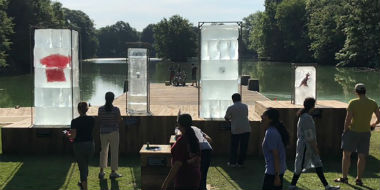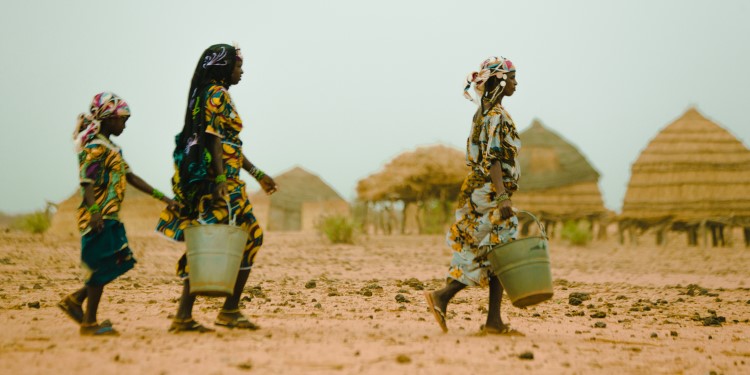AI
IBM Helps Developing Nations Harness Safe Water
November 23, 2018 | Written by: Jim Utsler
Share this post:

Women access safe water in a kiosk constructed with the support of Kenya RAPID at Kapendo, Turkana County.
Developed nations largely take clean water for granted. Open the tap, and there it is. Many developing countries, unfortunately, don’t have that luxury.
Kenya, for example, has a population of approximately 46 million people, with an astounding 41 percent relying on unimproved water sources such as ponds, shallow wells and rivers. Additionally, only nine out of 55 public water service providers in Kenya provide continuous water supplies, leaving people to find their own water sources for basic needs.
The traditional approach to coping with challenges such as these—especially in water-scarce, arid environments—has been to increase the supply by investing in decentralized water infrastructures, such as dams and boreholes, to meet growing domestic, agricultural and industrial demands.
Local governments and donor organizations typically finance these expensive water infrastructures, which are then handed over to communities that likely have limited capacity to maintain them. Complicating matters, water managers lack visibility into the location, status and performance of the water infrastructure, limiting their ability to provide repair and maintenance support.
Now, however, as part of the Kenya Resilient Arid Lands Partnership for Integrated Development (Kenya RAPID), IBM Research-Africa has created a water-management platform in the IBM Cloud* to address the needs of the approximately 3 million Kenyans living in the remote northern regions of the country who lack access to safe water. This has been developed in collaboration with various private and public-sector partners, as well as representatives from local governments in the northern counties of Kenya.
The key IBM Research contribution is a software platform known as the Water Management as a Service Platform (WMaaSP), which provides decision-support capabilities to county water officials and other partners. The platform, accessible on both the web and mobile apps, enables decision making by predicting water demand based on population trends, ground and surface water supplies, climactic patterns and land use.
When a citizen reports an issue to the sub-county water officer, the officer can use the mobile app to quickly locate the issue and assign the complaint to a repair officer. The repair officer can then inspect the issue and, also using the app, file a site report detailing the issue as well as required resources. Once the repairs are complete, the assigned officer can then file a repair report through the app detailing what was fixed.
Although this solution was developed primarily with developing countries in mind, it can be expanded, refined and applied to other situations—especially as the world grapples with the fallout from climate change.
This story first appeared in IBM Systems Magazine.
Jim Utsler can be reached at jjutsler@provide.net.

Senior Writer, IBM Systems Magazine
How Much Water Does it Take to Make Your Blue Jeans?
Question: What do The Weather Channel, 13,000 pounds of ice, and a latte have in common? Answer: A #KnowTheCost installation in Atlanta’s Piedmont Park designed to show the water cost of everyday items we use. A quantity of water most people cannot fully comprehend; hence, all that ice. To provide the full scope of the amount […]
Freshwater Scarcity: Calling on You to Help Improve Access
Meda is a large village on an Ethiopian plateau with a steep gorge that cuts the village in half. Letikiros Hailu was born in the south side of Meda, and from a young age, like all girls her age, most of her time was spent walking and waiting for water. Beginning at eight years old, […]

